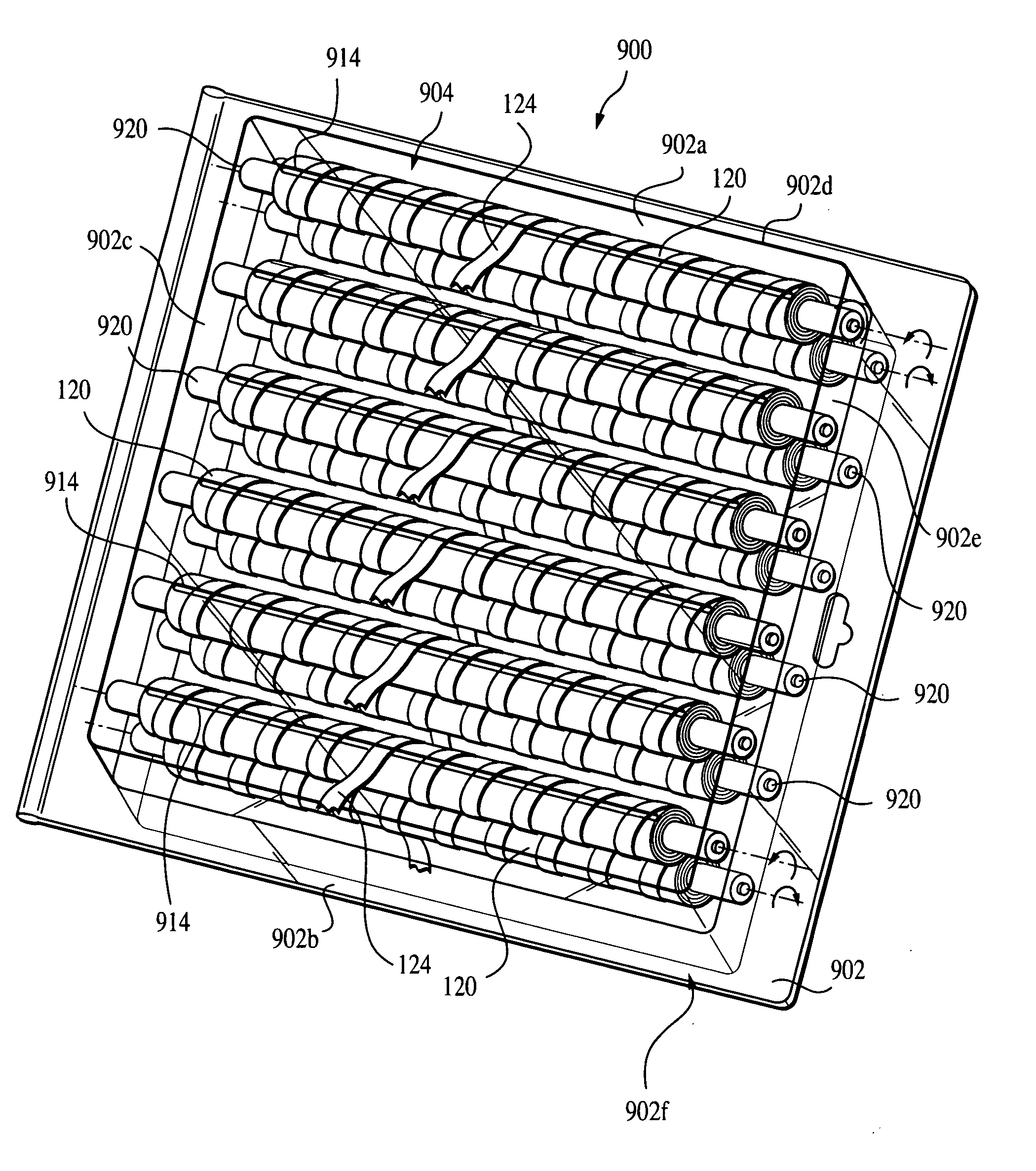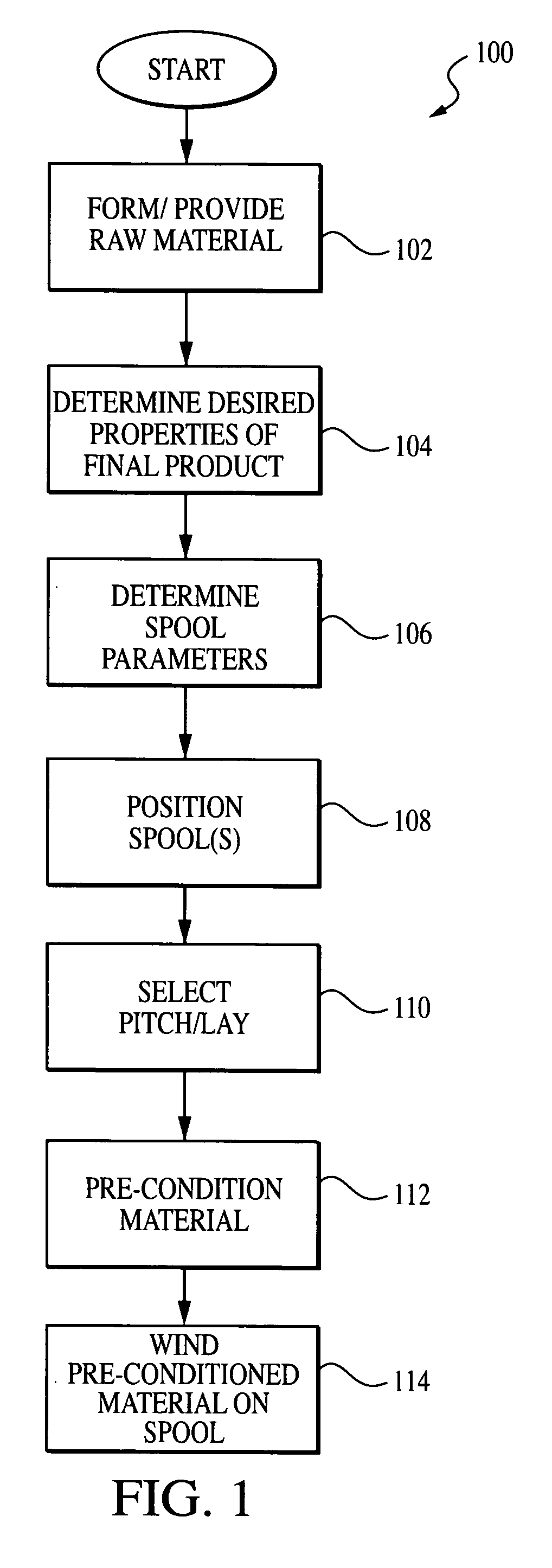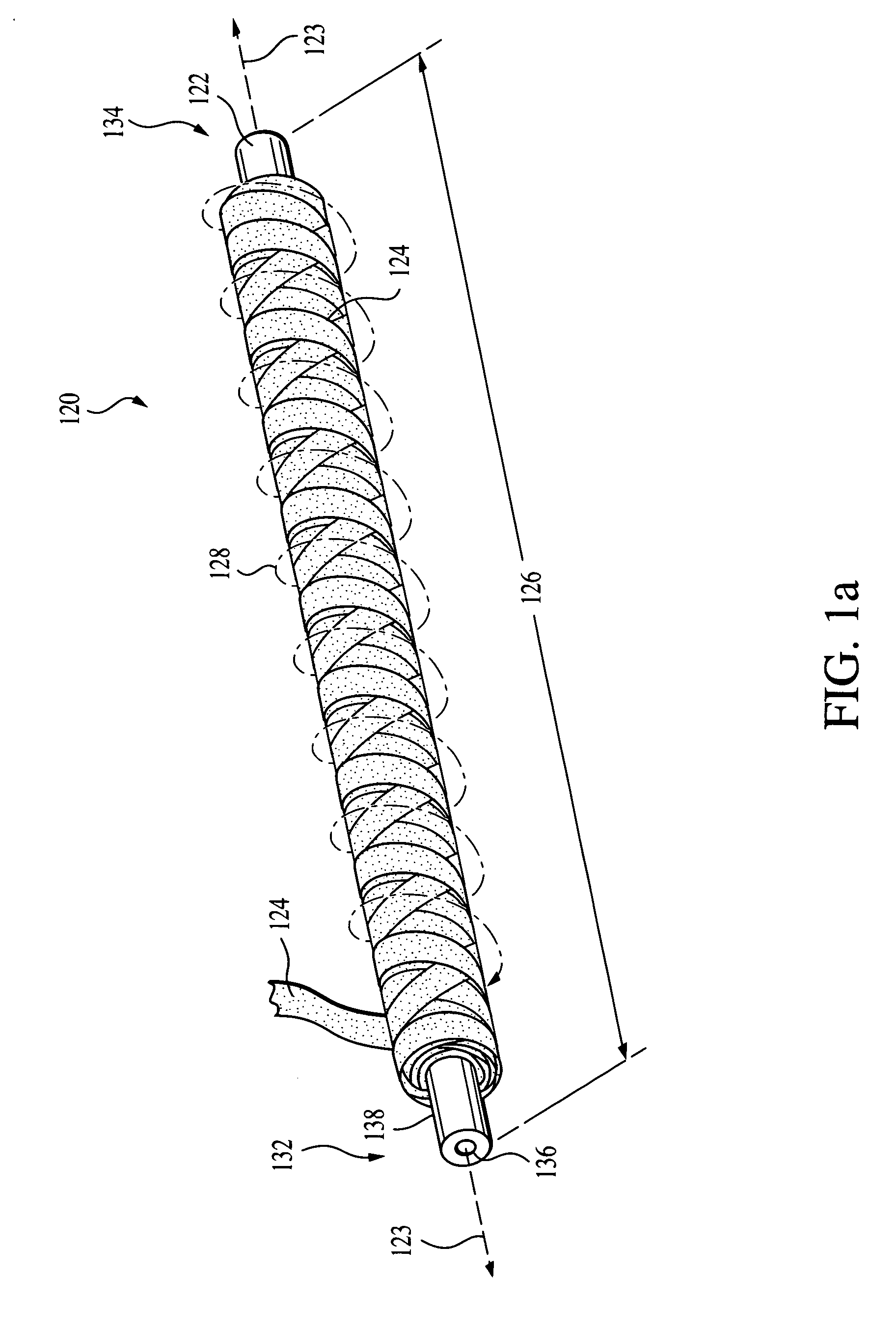Method and apparatus for winding spooled materials
a technology of spooled materials and winding methods, which is applied in the direction of ornamental textile articles, transportation and packaging, shop accessories, etc., can solve the problems of kinks in the ribbon, the radius of curling is difficult to maintain constant, and the curl achieved using such prior art methods is difficult to precisely control
- Summary
- Abstract
- Description
- Claims
- Application Information
AI Technical Summary
Benefits of technology
Problems solved by technology
Method used
Image
Examples
Embodiment Construction
[0035] Reference is now made to the drawings wherein like numerals refer to like parts throughout.
[0036] It is noted that while the following description is cast primarily in terms of an apparatus and method for winding decorative ribbon(s) onto one or more spools, the concepts and methods of the present invention may be used with other types of materials and in other applications with equal success. The method and apparatus of the invention can conceivably be applied to other “coiled” materials such as, for example, telephone cord. Accordingly, the invention is in no way meant to be limited to decorative ribbon; rather, its scope is defined by the claims appended hereto.
[0037] Referring now to FIG. 1, one embodiment of the method 100 of conditioning and winding material onto a spool according to the invention is described. As shown in FIG. 1, the method 100 comprises first providing or forming the “raw” or unconditioned material in step 102. In the illustrated embodiment, such un...
PUM
| Property | Measurement | Unit |
|---|---|---|
| length | aaaaa | aaaaa |
| width | aaaaa | aaaaa |
| length | aaaaa | aaaaa |
Abstract
Description
Claims
Application Information
 Login to View More
Login to View More - R&D
- Intellectual Property
- Life Sciences
- Materials
- Tech Scout
- Unparalleled Data Quality
- Higher Quality Content
- 60% Fewer Hallucinations
Browse by: Latest US Patents, China's latest patents, Technical Efficacy Thesaurus, Application Domain, Technology Topic, Popular Technical Reports.
© 2025 PatSnap. All rights reserved.Legal|Privacy policy|Modern Slavery Act Transparency Statement|Sitemap|About US| Contact US: help@patsnap.com



